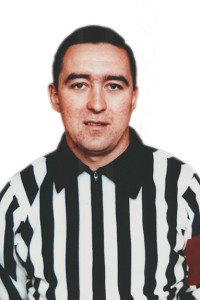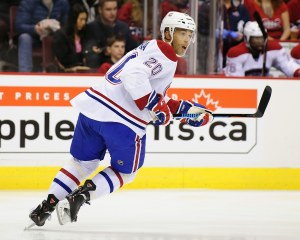The NHL ‘powers that be’ made a decision. They are getting rid of 4-on-4 overtime hockey and replacing it with 3-on-3 overtime hockey to settle games that are tied at the end of regulation. This should hopefully lead to fewer ties at the end of overtime, and therefore fewer shootouts. For many involved in hockey, the shootout is the on-ice equivalent of ‘fingernails on a chalkboard’. Anything must be better than the current skills competition, right? Well, ummm, not necessarily. Let’s start with one important point: success in overtime and the shootout matters. The Los Angeles Kings hoisted the Stanley Cup in 2012, ending the regular season with 30 regulation wins. Calgary had 32 regulation wins, but did not make the playoffs. To that 2012 Kings team, those extra points were the difference between missing the playoffs and winning the Stanley Cup. The extra point associated with overtime and shootouts, it matters.
Overtime’s Real Problem

I do not have a strong opinion about the shootout, but I have an opinion about how overtime games are measured. All games should be valued equally, but at the moment, overtime games are valued at 50% more than games decided in regulation. It is completely irrational. Take two extreme examples. One team finishes every game tied at the end of regulation. In overtime, they win half and lose half. The team is exactly .500, as middle of the pack as it gets. Under current NHL rules for awarding points, that team would finish the year with 123 point (41-0-41) and almost certainly win the President’s trophy. A similar team that loses half their games by 1 goal and wins their other half by 1 goal, all in regulation, would also be as middle of the pack as it gets. That team, though, finishes with 82 points (41-41-0) and would be out of the playoff hunt weeks before the season ends. No tangible difference between those two teams, a completely different result.
To me, the shootout is already happening in irrational territory. But since the NHL deems there must be a winner, a shootout is as good a way as any to finish off a game. One thing for certain, people watch it. And while that may disappoint purists, that shipped sailed when the overtime games got handed an extra point.
Is 3-on-3 any more rational than a shootout? Well, not really. At least 4-on-4 play makes sense because it is something teams need to practice. 4-on-4 play happens often during regulation. It is not a unique situation to overtime and a legitimate part of the game. 3-on-3 hockey, however, would be unique to overtime. It is so rare now that I doubt any coach has devoted any time to practicing it (though there are drills with 3 skaters on a side).
Changes Are Coming
3-on-3 hockey will require some interesting adjustments. Here are two that stand out, neither is particularly enticing.
The first one is line changes. Even in 5-on-5 and certainly in 4-on-4, line changes matter and goals are scored because of poor changes. In 3-on-3, that gets magnified. Is it really better to decide games on line changes? Will teams spend a bit more time keeping the puck and players closer to the bench side of the ice to speed up line changes and avoid game-ending mistakes? If a player needs to change but is stuck on the far side of the ice, that is a big issue in 3-on-3 hockey. I can imagine players rotating from the far side relative to the bench to the near side during transitions just so the player that has been on the ice longer has a better chance to change. A subtle difference, but one that could change the outcome of games. It is something that players will need to practice. In a related area, teams may also develop tactics that make it harder for tired players to get off the ice. A subtle difference during 5-on-5 hockey that its magnified greatly in 3-on-3 hockey.
The second issue goes to the officials. We’ve all seen officials swallow their whistles when a player gets on the ice a bit early. If play is not impacted, don’t blow the whistle and play on. But in 3-on-3, ‘too many men on the ice’ from an aggressive line change is much more likely to change the result of the game. Actually, any call is likely to have a huge impact on the game. And non-calls. Those little interference plays which happen often and have little meaningful impact on the game during 5-on-5 play, well, in 3-on-3, that same thing is a much bigger deal. Blow the whistle and give a team a power play? Or swallow it and give the other team an odd man rush? It is not at all clear to me that the officiating for 3-on-3 would – or even should — follow the same approach as it does during 5-on-5. What is inconsequential in 5-on-5 can be game-defining in 3-on-3. How officials call the game in overtime can have a lot to do with the outcome. Is that better than a shootout where the officiating plays no meaningful role? Below is a recent example of a tripping call that officials ignored in overtime that effectively decided the outcome. The impact of officiating will be magnified in 3-on-3 play.
https://www.youtube.com/watch?v=ZK4KNgC85Qg
Practice. Practice? Practice!!
https://www.youtube.com/watch?v=Vw-Vu-SyMu4
Practice time is limited over the course of a season. 3-on-3 hockey adds several more elements to practice. Despite the famous Allen Iverson rant, practice matters. One example goes back to line changes. I can easily envision a team practicing aggressive line changes, where two players are prepared to step onto the ice as one player is coming off. One player on the bench is near the blue line, the other near center ice. At the very moment the player comes off the ice, a determination is made as to which player comes onto the ice – the one near the blue or the one near the center-ice line. A line change in 3-on-3 hockey can literally be one person; this strategy has a real chance to effect the outcome.

The American Hockey League rules (overtime in section 85) requires a minimum of 3 skaters on the ice, making power plays 4-on-3 in OT by adding a player to the ice instead of subtracting a player. When the penalty expires, teams go back to 4-on-4 until the next whistle. The players will adapt, but it will look pretty awkward.
Since puck possession will be more critical in 3-on-3 hockey, I can also envision teams putting a greater value on face-off specialists. Manny Malhotra, one of the league’s best, might also be one of the best weapons in 3-on-3. If he is on my roster, I consider having him take every face-off in overtime, having him come off the ice after he wins it.

How much time does a hockey coach want to spend time practicing 3-on-3 face-offs? Or practicing 3-on-3 line changes? Or practicing 3-on-3 just about anything?
If you are a coach, how much time are you going to spend time on 3-on-3 hockey at the expense of something else? There are enough points at stake that becoming good at 3-on-3 hockey is going to matter. Coaches may not like the shootout, but it does not take up a major amount of practice time. This is really the major point. Practice matters and the time to practice is limited, especially once the season starts. Practice time is a zero-sum game. Adding 3-on-3 time into practices means taking away from something else. 4-on-4 would seem to be the obvious first casualty, but 4-on-4 hockey happens, so it can’t simply be cut completely. What else will take the hit? The penalty kill or the power play or breakout drills or tip drills, etc. Something important is going to get cut from practices at the expense of this new gimmick.
What makes 3-on-3 even sillier is that it still does not get rid of the original gimmick, the shootout. There are now two gimmicks where there was once one. Yes, there should be fewer shootouts, but that particular skills competition is still going to be part of the game. Will 3-on-3 hockey be entertaining? I would hope so! 4-on-4 hockey is fun to watch and 3-on-3 could be even more entertaining. But let’s all have the courage to call it what it is. Another gimmick.